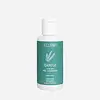What's inside
What's inside
 Key Ingredients
Key Ingredients

 Benefits
Benefits

 Concerns
Concerns

 Ingredients Side-by-side
Ingredients Side-by-side

Water
Skin ConditioningSodium Laureth Sulfate
CleansingGlycerin
HumectantPEG-7 Glyceryl Cocoate
EmulsifyingCocamidopropyl Betaine
CleansingSodium Lactate
BufferingPhenoxyethanol
PreservativePanthenol
Skin ConditioningPEG-120 Methyl Glucose Dioleate
EmulsifyingChlorphenesin
AntimicrobialLactic Acid
BufferingParfum
MaskingDisodium EDTA
Chamomilla Recutita Flower Water
MaskingSodium Hydroxide
BufferingBHT
AntioxidantPEG-40 Hydrogenated Castor Oil
EmulsifyingTrideceth-9
EmulsifyingCI 19140
Cosmetic ColorantDecylene Glycol
Skin ConditioningCI 16035
Cosmetic Colorant1,2-Hexanediol
Skin ConditioningWater, Sodium Laureth Sulfate, Glycerin, PEG-7 Glyceryl Cocoate, Cocamidopropyl Betaine, Sodium Lactate, Phenoxyethanol, Panthenol, PEG-120 Methyl Glucose Dioleate, Chlorphenesin, Lactic Acid, Parfum, Disodium EDTA, Chamomilla Recutita Flower Water, Sodium Hydroxide, BHT, PEG-40 Hydrogenated Castor Oil, Trideceth-9, CI 19140, Decylene Glycol, CI 16035, 1,2-Hexanediol
Water
Skin ConditioningCocamidopropyl Betaine
CleansingSodium Lauroamphoacetate
CleansingSodium Lactate
BufferingSodium Gluconate
Skin ConditioningPropanediol
SolventPicea Abies Extract
Skin ConditioningPEG-150 Distearate
EmulsifyingDecyl Glucoside
CleansingXanthan Gum
EmulsifyingLactic Acid
BufferingAllantoin
Skin ConditioningOlive Glycerides
EmulsifyingCeramide NP
Skin ConditioningRosmarinus Officinalis Leaf Oil
MaskingDisodium EDTA
Phenoxyethanol
PreservativeEthylhexylglycerin
Skin ConditioningWater, Cocamidopropyl Betaine, Sodium Lauroamphoacetate, Sodium Lactate, Sodium Gluconate, Propanediol, Picea Abies Extract, PEG-150 Distearate, Decyl Glucoside, Xanthan Gum, Lactic Acid, Allantoin, Olive Glycerides, Ceramide NP, Rosmarinus Officinalis Leaf Oil, Disodium EDTA, Phenoxyethanol, Ethylhexylglycerin
 Reviews
Reviews

Ingredients Explained
These ingredients are found in both products.
Ingredients higher up in an ingredient list are typically present in a larger amount.
Cocamidopropyl Betaine is a fatty acid created by mixing similar compounds in coconut oil and dimethylaminopropylamine, a compound with two amino groups.
This ingredient is a surfactant and cleanser. It helps gather the dirt, pollutants, and other impurities in your skin to be washed away. It also helps thicken a product and make the texture more creamy.
Being created from coconut oil means Cocamidopropyl Betaine is hydrating for the skin.
While Cocamidopropyl Betaine was believed to be an allergen, a study from 2012 disproved this. It found two compounds in unpure Cocamidopropyl Betaine to be the irritants: aminoamide and 3-dimethylaminopropylamine. High-grade and pure Cocamidopropyl Betaine did not induce allergic reactions during this study.
Learn more about Cocamidopropyl BetaineDisodium EDTA plays a role in making products more stable by aiding other preservatives.
It is a chelating agent, meaning it neutralizes metal ions that may be found in a product.
Disodium EDTA is a salt of edetic acid and is found to be safe in cosmetic ingredients.
Learn more about Disodium EDTALactic Acid is another well-loved alpha hydroxy acid (AHA). It is gentler than glycolic acid but still highly effective.
Its main role is to exfoliate the surface of the skin by loosening the “glue” that holds dead skin cells together. Shedding those old cells leads to smoother, softer, and more even-toned skin.
Because lactic acid molecules are larger than glycolic acid, they don’t penetrate as deeply. This means they’re less likely to sting or irritate, making it a great choice for beginners or those with sensitive skin.
Like glycolic acid, it can:
Lactic acid also acts as a humectant (like hyaluronic acid). It can draw water into the skin to improve hydration and also plays a role in the skin's natural moisturizing factor (NMF) in the form of sodium lactate.
Studies show it can boost ceramide production to strengthen the skin barrier and even help balance the skin’s microbiome.
To get results, choose products with a pH between 3-4.
Lower strengths (5-12%) focus on surface exfoliation; higher strengths (12% and up) can reach deeper in the dermis (deeper, supportive layer) to improve skin texture and firmness over time.
Though it was originally derived from milk, most modern lactic acid used in skincare is vegan. It is made through non-dairy fermentation to create a bio-identical and stable form suitable for all formulations.
When lactic acid shows up near the end of an ingredient list, it usually means the brand added just a tiny amount to adjust the product’s pH.
Legend has it that Cleopatra used to bathe in sour milk to help reduce wrinkles.
Lactic acid is truly a gentle multitasker: it exfoliates, hydrates, strengthens, and brightens. It's a great ingredient for giving your skin a smooth, glowing, and healthy look without the harshness of stronger acids.
Read more about some other popular AHA's here:
Learn more about Lactic AcidPhenoxyethanol is a preservative that has germicide, antimicrobial, and aromatic properties. Studies show that phenoxyethanol can prevent microbial growth. By itself, it has a scent that is similar to that of a rose.
It's often used in formulations along with Caprylyl Glycol to preserve the shelf life of products.
Sodium Lactate is the sodium salt of lactic acid, an AHA. It is a humectant and sometimes used to adjust the pH of a product.
This ingredient is part of our skin's NMF, or natural moisturizing factor. Our NMF is essential for the hydration of our top skin layers and plasticity of skin. NMF also influences our skin's natural acid mantle and pH, which protects our skin from harmful bacteria.
High percentages of Sodium Lactate can have an exfoliating effect.
Fun fact: Sodium Lactate is produced from fermented sugar.
Learn more about Sodium LactateWater. It's the most common cosmetic ingredient of all. You'll usually see it at the top of ingredient lists, meaning that it makes up the largest part of the product.
So why is it so popular? Water most often acts as a solvent - this means that it helps dissolve other ingredients into the formulation.
You'll also recognize water as that liquid we all need to stay alive. If you see this, drink a glass of water. Stay hydrated!
Learn more about Water